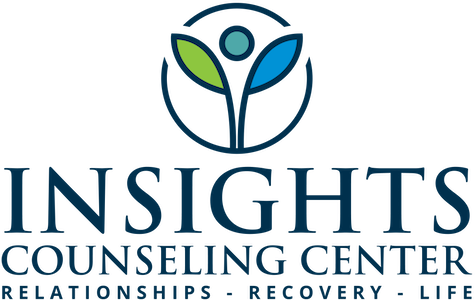Modes in Schema Therapy: Understanding the Inner Cast of Characters
Have you ever felt like part of you wanted to open up in a relationship—but another part shut down, got angry, or disappeared altogether? In schema therapy, we call these inner shifts modes—distinct emotional states that surface in response to stress, conflict, or deep emotion.
Modes represent the different “parts” of us that formed through life experiences. Some carry pain from the past, others protect us from feeling too much, and some echo old voices of criticism or pressure. When we don’t realize a mode has taken over, we can feel confused, reactive, or disconnected from ourselves and others.
Learning how to identify, understand, and care for your modes can be life-changing. Schema therapy helps you do just that.
What Are Modes?
A mode is the emotional state you shift into in a given moment. Each mode includes specific thoughts, feelings, body sensations, and behaviors. When you’re triggered—by a situation that touches a core wound or unmet need—you may slip into a mode without realizing it.
Some modes reflect your most vulnerable self, others are ways you learned to cope or survive, and others act like internalized “parents,” keeping you in line or holding you to impossible standards. We all have these modes. Healing means learning to work with them, not against them.
Schema therapy groups modes into four main categories:
1. Child Modes
These are the younger parts of you that still carry emotional needs, longings, and wounds from earlier in life. They often surface when you're hurt, overwhelmed, or emotionally exposed.
Vulnerable Child
This part of you feels raw and exposed—lonely, scared, rejected, or unloved. It holds the unmet needs of your younger self and may be triggered in times of conflict or disconnection.Angry Child
This mode expresses frustration and anger about those unmet needs. It may show up as irritability, outbursts, or resentment when you feel dismissed or overlooked.Impulsive/Undisciplined Child
This mode seeks immediate gratification and may act without thinking. It resists limits, feels easily bored or frustrated, and often avoids difficult emotions.Happy Child
This is your joyful, connected, and playful self. When this mode is present, you feel safe, loved, and free to be yourself.
2. Maladaptive Coping Modes
These modes developed to protect you from pain or rejection. They help you manage overwhelming feelings by avoiding, overcontrolling, or adapting to others—but over time, they can limit emotional connection and authenticity.
Compliant Surrenderer
This part gives in to others to avoid conflict or rejection. It may silence your voice, suppress your needs, or stay in relationships that don’t feel safe or mutual.Detached Protector
This mode shuts down emotion and disconnects from others. It may feel numb, checked out, or overly independent, often to avoid vulnerability or hurt.Overcompensator
This part tries to hide feelings of inadequacy by going to the opposite extreme—seeking control, perfection, status, or dominance. It may come off as critical or arrogant, but underneath is often a deep sense of insecurity.
3. Maladaptive Parent Modes
These modes reflect internalized voices from early caregivers, authority figures, or cultural systems. They can be harsh, demanding, or shaming—often without you realizing how much they influence your self-image.
Punitive Parent
This inner voice is judgmental and condemning. It might say you're “bad,” “selfish,” or “not enough,” especially when you make a mistake or have strong emotions.Demanding Parent
This mode insists you meet rigid standards—always be productive, always give to others, never show need. It sees rest or imperfection as weakness and pushes for constant achievement.
4. Healthy Adult Mode
This is the grounded, compassionate part of you that can care for your younger parts, set limits with harsh voices, and live from your core values. It’s the leader your inner system needs.
The Healthy Adult:
Offers protection and nurturing to your vulnerable parts
Guides your choices with wisdom and balance
Challenges harsh or unrealistic internal voices
Helps you stay connected to others without losing yourself
This mode may feel quiet or unfamiliar at first, especially if other modes have dominated. But schema therapy helps you strengthen it so you can respond—not just react—to life’s challenges.
Why Modes Matter in Relationships
When you're in a relationship, you're not just two people—you’re two systems of modes interacting. If your Vulnerable Child is triggered and your partner responds from their Detached Protector, it can create a painful cycle. Or if both of your Angry Child modes collide, things may escalate quickly without either of you feeling heard.
Understanding your own modes—and learning to recognize your partner’s—can lead to more compassion and clarity. You can start to say, “That’s my Compliant Surrenderer trying to keep the peace,” or “This isn’t really about them—it’s my Punitive Parent criticizing me again.” These insights change the tone of conversations, deepen connection, and create room for growth.
You Are More Than Just a Mode
You are not only the scared part. Not only the protector. Not only the critic. Schema therapy helps you name and care for each part of you—but it also helps you remember that none of those parts define your worth.
When the Healthy Adult leads, your modes can become allies instead of obstacles. They don’t have to control your reactions or run your relationships. You can choose something different.
If you’re ready to meet the parts of yourself that have been silently shaping your story, schema therapy offers a structured, compassionate path forward. We’re here to help you explore those inner roles—and find your way back to who you really are.

